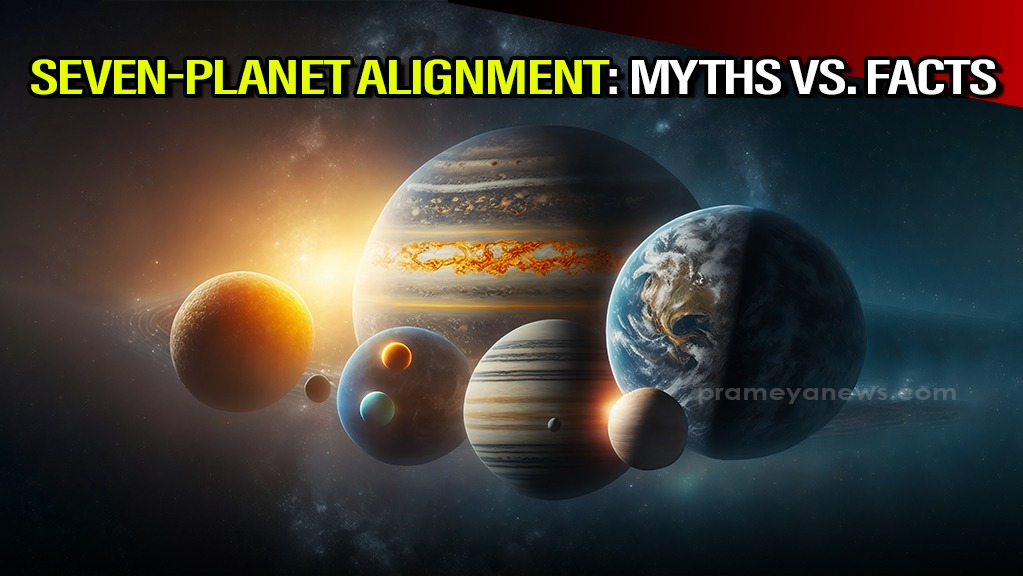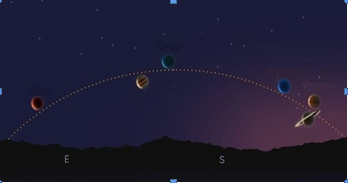

Some narratives are claiming for a "dazzling" and "rare" event where seven planets will align perfectly in a straight line on January 25th 2025. Some even have gone to the extent of explaining that this hasn't happened in over 170 years. Though it might sound exciting for space enthusiasts, but it's important to separate fact from fiction.

Reality of Planetary Alignment
The buzz surrounding this event stems from a misunderstanding of what astronomers call a "planetary parade" or "planet parade." This simply means that several planets appear in the same general area of the sky from our perspective on Earth. It's like they're all gathered in the same celestial neighborhood, but not necessarily in a perfectly straight line.
Planets are typically visible during sunrise and sunset, positioned near the ecliptic, an imaginary line that traces the Sun's path across the sky. Think of it as a cosmic highway, with planets clustered nearby, but not always in a perfect alignment.
It's important to remember that planets don't orbit in perfect circles; their paths are elliptical and don't lie on the same plane. Imagine marbles rolling around on a tilted table, each following its own unique path. That's a more accurate picture of planetary motion.
Here's what you need to know about this so-called "seven planets alignment":
Five, Not Seven: Only five planets are visible to the naked eye: Mercury, Venus, Mars, Jupiter, and Saturn. Claims about seven planets likely include Uranus and Neptune, which are too faint to see without a telescope.
Not a One-Night Event: These planets will be visible in the evening sky throughout the second half of January, not just on a single night.
Not as Rare as Claimed: Seeing three or four planets clustered together is relatively common. Five visible planets align roughly every 19 years. A truly rare alignment, with all eight planets, occurs only about once every 170 years.
What You Can Actually See in January's Sky
During the second half of January, you have a fantastic opportunity to observe four planets gracing the evening sky:
Venus: The brightest of the bunch, shining like a diamond in the western sky after sunset.
Saturn: A yellowish glow slightly below and to the right of Venus. With a telescope, you might even glimpse its rings.
Mars: Visible in the eastern sky, showcasing its distinctive reddish hue.
Jupiter: The second brightest, positioned high overhead, dominating the night sky.
As the night progresses, these celestial bodies will appear to move from east to west, setting one by one. Saturn will be the first to disappear below the horizon, followed by Venus.
The Next Celestial Gathering
If you're eager to witness a more significant planetary alignment, mark your calendar for February 28th, 2025, when a similar gathering will be visible at dawn.
While the "seven planets alignment" might be overhyped, the January sky still offers a beautiful celestial display. It's a chance to connect with the universe, appreciate the elegant dance of the planets, and perhaps spark an interest in astronomy. You don't need any special equipment to enjoy this view – just clear skies and a sense of wonder.
This "seven planets" saga highlights how misinformation can spread online, especially when it involves captivating topics like space. It's a reminder to be discerning, check sources, seek reliable information, and question claims that seem too good to be true.
The universe, in its natural state, is spectacular enough. While the January sky may not feature a perfectly aligned planetary parade, it still offers a fantastic opportunity to appreciate the beauty and wonder of our cosmos. Thus step outside, look up, and enjoy the celestial dance – remember twinkle, twinkle little star
With technical inputs from: Dr. Subhendu Patnaik, Astronomer